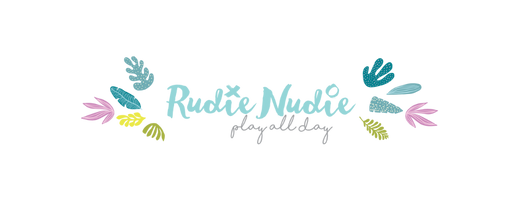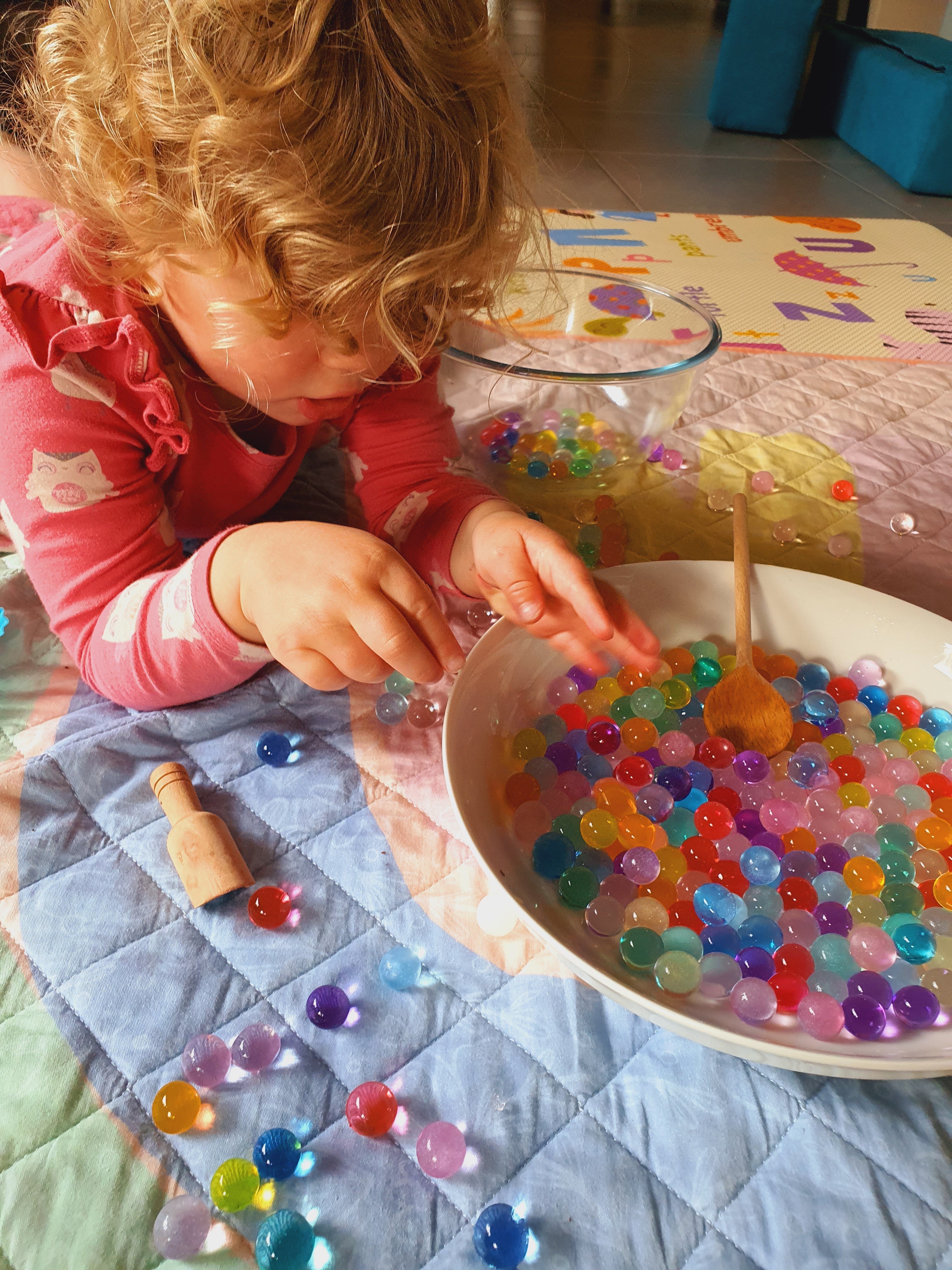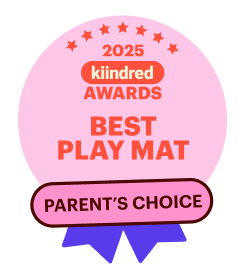Water beads are an incredibly fun sensory base for children and toddlers to explore, but they can also be terrifying to parents! We've asked Dominique from @playtime_with_billie to answer some of the most commonly asked questions about water beads.
What are water beads?
Water beads, also known as Orbeez, or water marbles, are tiny polymer spheres that absorb water and grow to up to 100 times their original size when left in a bowl of water. Water beads generally come in 2 main sizes, small and jumbo. Small beads come up to about 8mm when fully inflated, jumbo can get as big as 4cm when inflated. Generally they come in small packets, boxes or jars of a few hundred to thousands of beads. There are many fun colour combinations, including clear, translucent and pearlescent, and themes like ocean which might contain various shades of blue. I’ve even started seeing water cubes recently, in a fun square shape!
They’re kind of pricey, can I reuse them?
Water beads can often be used over multiple play sessions. There’s two main ways to reuse your water beads. One, dehydrate them. Leave them out in the sun on a tray (not on a windy day, I did that once and ended up with water beads everywhere) and they will dehydrate and return to their original size for storage. Water beads can successfully be de and re hydrated a handful of times before they start to degrade in quality.
Or, option two, you can simply store them in a sealed, airtight container. Some people prefer to add a little water to stop them from dehydrating, others like to keep them in the fridge. Just make sure to check them for any mould before you bring them out for play next time.
How do I get rid of them?
Once you’ve re-used them a few times you might notice their quality has started to degrade, and they’re breaking up really easily. This generally means it’s time to say goodbye. To dispose of your water beads either pop them in the garden (more info below), or pop them in the bin. Never put water beads down the sink, they may block the plumbing, especially if they dehydrate and then inflate again. And we’ve all heard the story of the you-tuber who thought they’d be funny in the bath, only for them to flood through the sewerage system and come back up through his toilet, blocking the whole neighbourhood’s plumbing in the process.
Are they bad for the environment?
Nope, not at all! While they’re not safe for ingestion by either humans or animals, they are actually great for gardens! Did you know water beads were actually first invented for drought-stricken gardens? When used in gardening, the beads suck up the moisture from the soil when it rains, and then slowly release it back into the soil when it dries out, which makes for happy plants! Generally in gardening circles they’re known as hydrogel or water crystals. So, when you’re done playing with your water beads, make the most of them and pop them into the garden, just make sure you dig down into the soil a little first and cover them with soil so that any local wildlife or pets don't decide they look like a tasty snack.
I’ve heard they can be dangerous for children, is this true?
Yes, water beads can be dangerous, so any water beads play needs to be done under close supervision, especially with younger children. If your child has swallowed a water bead, call the poisons information line straight away.
As always, you know your children best, so if it’s not something you're comfortable with, it’s not worth the risk - no matter how pretty and fun it looks.
They seem SO MESSY!
This one is a bit true. Water beads can be messy, especially the jumbo ones, which are so fun for our little people to squish. Squishing water beads breaks the outside membrane, releasing the inner squishy crystals, such a fun sensory experience, but yeh, a little bit messy. Plus, water beads are incredibly bouncy, so even without them being squished they can bounce all over the place. But - that’s where your Rudie Nudie mat comes in! We always make sure we spread out our jumbo or large Rudie Nudie before we bust out the water beads. I’ve taught my daughter Billie that water beads (and all sensory bases), must stay in the tray (the old “sensory play stays in the tray, or sensory play goes away”) but there is always a mess on my Rudie Nudie mat at the end, no matter how hard she tries. The good news, they're so easy to clean up! I just shake off the mat into the garden, to make sure any clumps are removed, and then pop the Rudie Nudie mat in the wash. Super easy clean up!
Bonus tip: always make sure you follow the instructions when inflating water beads, and let them sit in the water for the correct amount of time. If your kids are impatient, sometimes it's worth getting them ready the night before.
Overall, water beads can be a super fun sensory experience, even I love playing with them with Billie.
Love, Dom (@playtime_with_Billie)
In the interest of safety, we have linked to a recent article about the dangers of waterbeads here. As Dom mentioned above, you know your own child and what you're comfortable with, please make sure you are informed of the risks and never leave your child unattended with water beads.







